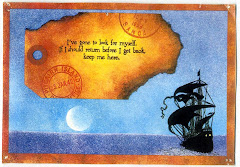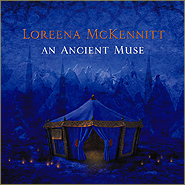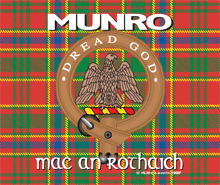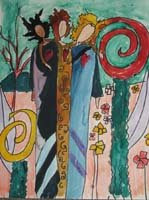
Since our spring was so late this year, our lilacs were late too. Finally, this past week, they were in full, glorious bloom. It rained on and off all week (yes!), so I was afraid I wasn't going to be able to go out and enjoy them. They bloomed well this year, and as I went back and forth to work, I could see huge purple masses behind the sheets of rain. It finally turned warm and sunny Friday afternoon, and when I arrived home the whole world smelled of lilacs.
Last year I wrote a post about sense memories, and the scent of lilacs is my most vivid sense memory. It is my very favorite scent, ever, and they are my very favorite flowers, ever. Below, I'm repeating my lilacs post from last year. Apologies to the three of you who read it then:
~~~~~~~~~~
American poet Amy Lowell published the poem "Lilacs" in 1925. Up to now, I had been familiar with only these lines:
~~~~~~~~~~
"Lilacs in dooryards
Holding quiet conversations
with an early moon."
~~~~~~~~~~
Amy "got" lilacs; I can tell from the following lines:
~~~~~~~~~~
A curiously clear-cut, candid flower,
Standing beside clean doorways,
Friendly to a house-cat and a pair of spectacles,
"Making poetry out of a bit of moonlight
And a hundred or two sharp blossoms."
~~~~~~~~~~
"You are the great flood of our souls
Bursting above the leaf-shapes of our hearts,
You are the smell of all Summers,
The love of wives and children,
The recollection of the gardens of little children"
~~~~~~~~~~
Lowell's poem lauds the lilac's distinctive heart-shaped leaf.
~~~~~~~~~~
However much she understood and appreciated lilacs, Amy irritates me a bit. She seems to be saying that lilacs ARE New England. She enumerates: lilacs of Connecticut, of New Hampshire, Rhode Island, Massachusetts, Vermont, Maine.
But, dear Miss Lowell, lilacs are North Dakota too. Although she wrote the following lines about New England lilacs, they evoke in me prairie scenes:
~~~~~~~~~~
"Lilacs watching a deserted house
Settling sideways into the grass of an old road;
Lilacs, wind-beaten, staggering under a lopsided shock of bloom
Above a cellar dug in a hill."
~~~~~~~~~~
Dilapidated old farm houses and barns dot the North Dakota countryside, sagging slowly back into the earth. Sometimes only the foundation is left, but often, beside that very same foundation, or the ghost of a shanty, sod house or dugout, is an old, old lilac bush, probably planted by homesteaders.
In the yard of our first home in Larson, there were two large lilac bushes, one on each side of the front gate. We carved a little cave into the side of one. During the winters, snowbanks would form over the top of the bushes, completely hiding them. We would climb up the solidly-packed "hills" and sled down the other side. How those bushes must have taken a beating! In fact, they looked pretty scraggly and were bloom-less by the time we moved to our next house.
Because lilacs bloom later in northern North Dakota, to me, they are inextricably entwined with Memorial Day and the sight of Old Glory. They are also entwined with memories of Vacation Bible School. We would pick heaps of blossoms at lunch time and they would add a heady scent to our afternoon lessons in the little white ste
epled church. I love how lilacs look against the weathered silvery gray of wooden houses that were once painted white.
Four years ago, my sister, my niece and I took a spin through Larson after we cleaned out our aunt's house in Crosby. I hadn't been back there for years. That first house had burned down a long time ago. The huge elm tree where I used to sit on a low-spreading limb and read for hours is gone. Overgrown prairie grasses hid the foundation. "The prairie has taken over," I bawled.
But there, on both sides of a path that leads to a front-door that is no longer there, were two huge, magnificent lilac bushes in full bloom. Left to their own devices, those venerable old bushes came back stronger than ever. I picked as many blooms as I could, and the scent carried us home.
Lilacs last about a week. That's not very much when you have to wait a whole year for them. Some years, when there is a late frost, the lilacs don't bloom at all, and I mourn. This year, when they are so abundant, but are still gone so quickly, I am going to do a lot of inhaling while I can.

~~~~~~~~~~
"LILACS"
by Amy Lowell
Lilacs,
False blue,
White
Purple,
Colour of lilac,
Your great puffs of flowers
Are everywhere in this my New England.
Among your heart-shaped leaves
Orange orioles hop like music-box birds and sing
Their little weak soft songs;
In the crooks of your branches
The bright eyes of song sparrows sitting on spotted eggs
Peer restlessly through the light and shadow
Of all Springs.
Lilacs in dooryards
Holding quiet conversations with an early moon;
Lilacs watching a deserted house
Settling sideways into the grass of an old road;
Lilacs, wind-beaten, staggering under a lopsided shock of bloom
Above a cellar dug into a hill.
You are everywhere.
You were everywhere.
You tapped the window when the preacher preached his sermon,
And ran along the road beside the boy going to school.
You stood by pasture-bars to give the cows good milking,
You persuaded the housewife that her dish pan was of silver.
And her husband an image of pure gold.
You flaunted the fragrance of your blossoms
Through the wide doors of Custom Houses--
You, and sandal-wood, and tea,
Charging the noses of quill-driving clerks
When a ship was in from China.
You called to them: "Goose-quill men, goose-quill men,
May is a month for flitting."
Until they writhed on their high stools
And wrote poetry on their letter-sheets behind the propped-up ledgers.
Paradoxical New England clerks,
Writing inventories in ledgers, reading the "Song of Solomon" at night,
So many verses before bed-time,
Because it was the Bible.
The dead fed you
Amid the slant stones of graveyards.
Pale ghosts who planted you
Came in the night-time
And let their thin hair blow through your clustered stems.
You are of the green sea,
And of the stone hills which reach a long distance.
You are of the elm-shaded streets with little shops where they sell kites and marbles,
You are of great parks where everyone walks and nobody is at home.
You cover the blind sides of greenhouses
And lean over the top to say a hurry-word through the glass
To your friends, the grapes, inside.
Lilacs,
False blue,
White
Purple,
Colour of lilac,
You have forgotten your Eastern origin,
The veiled women with eyes like panthers,
The swollen, aggressive turbans of jewelled Pashas.
Now you are a very decent flower,
A reticent flower,
A curiously clear-cut, candid flower,
Standing beside clean doorways,
Friendly to a house-cat and a pair of spectacles,
Making poetry out of a bit of moonlight
And a hundred or two sharp blossoms.
Maine knows you,
Has for years and years;
New Hampshire knows you,
And Massachusetts
And Vermont.
Cape Cod starts you along the beaches to Rhode Island;
Connecticut takes you from a river to the sea.
You are brighter than apples,
Sweeter than tulips,
You are the great flood of our souls
Bursting above the leaf-shapes of our hearts,
You are the smell of all Summers,
The love of wives and children,
The recollection of the gardens of little children,
You are the State Houses and Charters
And the familiar treading of the foot to and fro on a road it knows.
May is lilac here in New England,
May is a thrush singing "Sun up!" on a tip-top ash-tree,
May is white clouds behind pine-trees
Puffed out and marching upon a blue sky.
May is a green as no other,
May is much sun through small leaves,
May is soft earth,
And apple-blossoms,
And windows open to a South wind.
May is full light wind of lilac
From Canada to Narragansett Bay.
Lilacs,
False blue,
White
Purple,
Colour of lilac.
Heart-leaves of lilac all over New England,
Roots of lilac under all the soil of New England,
Lilacs in me because I am New England,
Because my roots are in it,
Because my leaves are of it,
Because my flowers are for it,
Because it is my country
And I speak to it of itself
And sing of it with my own voice
Since certainly it is mine.










































































